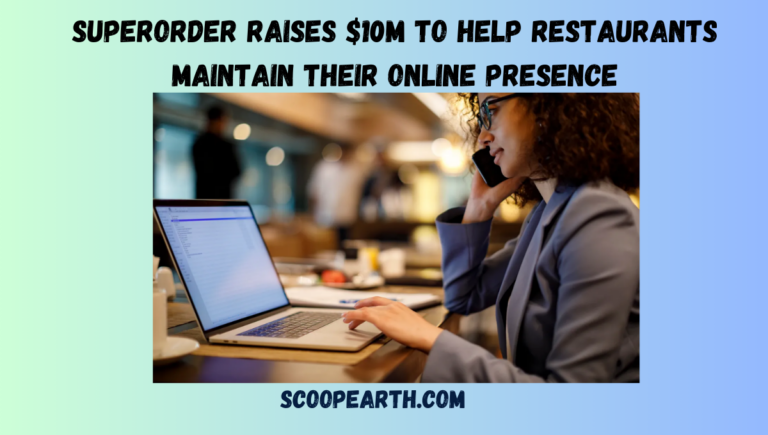Raghav Poddar was majoring in computer science at Columbia University when he became interested in restaurant owners’ difficulties keeping up their web presence. Poddar, a self-described “foodie,” frequently used food delivery and pickup services in New York City because he had little time to prepare meals.
It is impossible to emphasize the value of having a positive online reputation in the restaurant business. One recent study found that 77% of customers look at a restaurant’s website before eating or placing an order. Nearly 70% of those people have been discouraged or otherwise prevented from going to the restaurant due to its website.
Superorder (formerly Forward Kitchens), a platform that offers websites, menus, photographs, and tools for order administration, marketing, financial management, and more to restaurants, is the solution that Poddar developed. In a funding round led by Foundation Capital and including Kyle Vogt and Daniel Kan, co-founders of Cruise, I2BF Global Ventures, and others, Superorder said today that it had raised $10 million.
The main objective of Superorder is to assist restaurants in increasing revenue from “off-premise” dining, i.e., delivery and pickup services. Restaurants were obliged to make changes due to the pandemic, which accelerated the expansion of off-premise dining. According to Restaurant.org, two-thirds of Americans are more inclined to order takeout than before the pandemic.
However, Poddar contends that many restaurant owners are still losing money due to the newly imposed administrative duties of the digital age.
Superorder makes an effort to make things more efficient by enabling restaurants to have an online presence, including food delivery, where they can build several digital storefronts and associated financials and operational dashboards without getting in touch with each delivery platform. Additionally, Superorder provides restaurant clients consulting services to help them open “virtual restaurants” or storefronts for various brands operating inside their kitchens.
According to Poddar, Superorder works with restaurants to generate menus and photographs for each brand, which Superorder then lists on third-party delivery platforms. Superorder uses data science to discover popular items within a restaurant’s delivery area.
It’s important to note that the idea of “ghost kitchens,” or virtual eateries, which gained prominence during the epidemic, doesn’t have an excellent track record.
Eateries frequently need help to afford employees, find additional delivery drivers for their virtual eateries, and market a site that is essentially invisible to the general public. Additionally, some third-party delivery services have retaliated against virtual restaurants by charging that the eateries that built them flooded the services with repetitious listings and menus. Since March, UberEats has demanded that virtual kitchens maintain high average ratings (above 4.3 stars) and a low order cancellation rate.
However, Superorder asserts that compared to its rivals, it takes a more deliberate approach to building virtual kitchens. One example is that the platform, similar to tools provided by restaurant tech startups Swipeby and Lunchbox, employs generative AI to produce menus and photographs for each virtual restaurant listing. According to data from Grubhub, restaurants displaying photos of the goods on their menu generate at least 70% more orders and 65% more revenue.
Naturally, one wonders how much the AI-generated graphics resemble the menu items. Gross inaccuracies may subject restaurants to legal action for misleading advertising. However, Poddar dismisses these worries, promoting Superorder’s generative AI as a method for restaurants to deliver pictures that are “close to” actual food graphics without paying a fee to a qualified food photographer.
It also needs to be clarified what powers Superorder’s generative AI capabilities, i.e., if the AI models were created internally or through a third-party API, which is quite alarming. The former may be more prone to errors; Superorder has been questioned about this.
Superorder has its hands in many different pies, so it competes with many other entrepreneurs. Superorder’s major competitors, according to Poddar, are Nextbit, Virtual Dining Concepts, and Ordermark. However, one could argue that, in terms of digital asset management, the company also competes with MadEats, CloudEats, and Lunchbox.
Superorder, headquartered in New York City, has consistently grown since its inclusion in the Summer 2019 Y Combinator cohort. The business serves a clientele of more than 1,500 eateries and manages about 1.5 million orders with a staff of about 70 workers across over 180 sites in the United States.
Additionally, the market is well-capitalized, guaranteeing a sizable stake for each participant. As per a recent projection, the online meal delivery sector is poised to surge from a $160 billion valuation in 2022 to an impressive $483 billion by 2032.
According to Poddar, the new amount for Superorder will be used to grow the company’s operations, sales, and technical teams.
Along with growing our customer base, we’ll also broaden our product line to include a complete off-premise operating system for restaurants, according to Poddar. We’re trying to integrate more deeply into the restaurant software stack and develop an all-in-one software platform that provides restaurants with the resources they need to increase takeaway and delivery revenue.
[Source of Information: Techcrunch.com]










